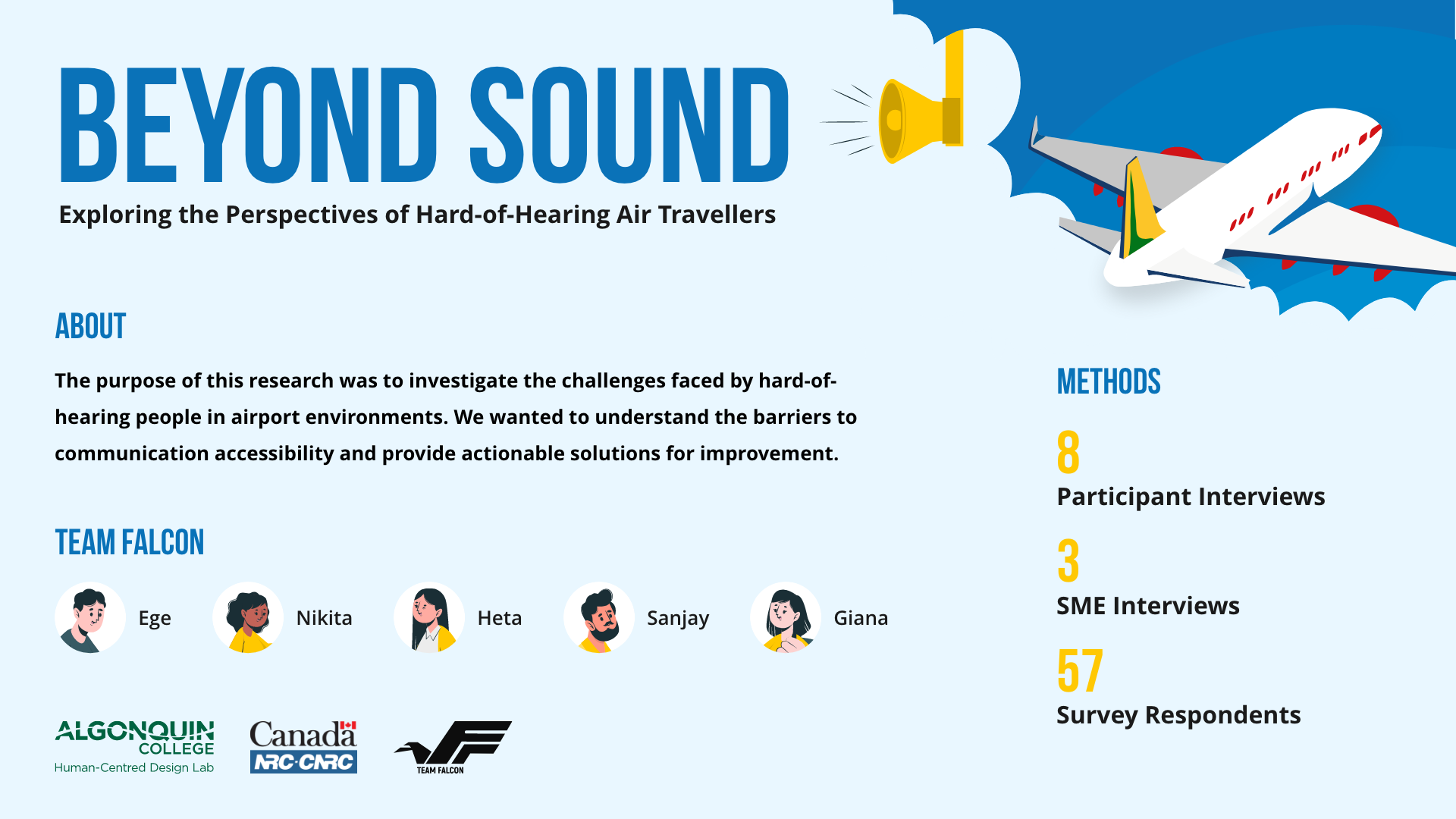Beyond Sound: Exploring the Perspectives of Hard-of-Hearing Air Travellers
Posted on Thursday, July 11th, 2024

| Client | Centre for Air Travel Research |
| Professor(s) | Jed Looker Raphael Joseph |
| Program | Interdisciplinary Studies in Human-Centred Design |
| Students | Heta Sanjay Gadhiya, Sanjay Sudar, Ege Pelesen, Marie Shimirwa, Siwie Peng |
Project Description:
For this study, we used a mixed-method approach. We began with a screening questionnaire survey and then proceeded with semi-structured interviews. Both the survey questionnaires and semi-structured interviews gathered quantitative and qualitative data.
A considerably large number of respondents or 38.6% rated the public announcement system as 1 which is an indication of dissatisfaction and 28.1% of participants evaluated this condition as 2. This indicates that the level of overall satisfaction with the public announcement system at the airport is low and the majority of passengers are dissatisfied with it. This data can indicate a specific service gap of the airports observed, which could be related to the quality, loudness, or functionality of their announcement system. The findings also reveal that the majority of travellers, 80.4%, do request assistance from the airport staff, further emphasizing how crucial it is to have competent and approachable staff to offer help.
It was found that participants had different experiences with the support staff at different airports. The reason behind this massive difference in their experience because most of the airport staff has not been trained on how to identify passengers with invisible disabilities in particular hearing impairments. The participants also shared that the fluctuation in the level of support provided by the staff depended on the individual airport management’s decision and the extent to which the staff wanted to assist.
In addition, passengers lack visual information since auditory information is conditional on a passenger’s distance from the source of the announcement. Some participants complained that often, information shared over the public address systems could hardly be heard because of noise and bad acoustics, where one was not close to the source of the information. Increasing the amount of visual information displayed or the regularity of text alerts could provide a much better experience for the entire population despite the minority whose primary form of information is actually sound.
The lack of confidence while navigating the airport is captured by the fact that passengers lack knowledge of the existing assistive technologies. Some of the participants were answerable that they had no idea about some of the facilities presently in place at the airports like the hearing loops and text alert systems which could have eased their way around the airport or made it possible for them to do it on their own. Thus, it leads to an increased level of stress in their solitary traveling conditions and more reliance on other travelers.
By identifying these challenges, this study aimed to contribute to the understanding of how the air travel industry can improve communication to help increase the accessibility and overall satisfaction of all passengers.
Video Presentation
Gallery

|

|

|

|

|
|